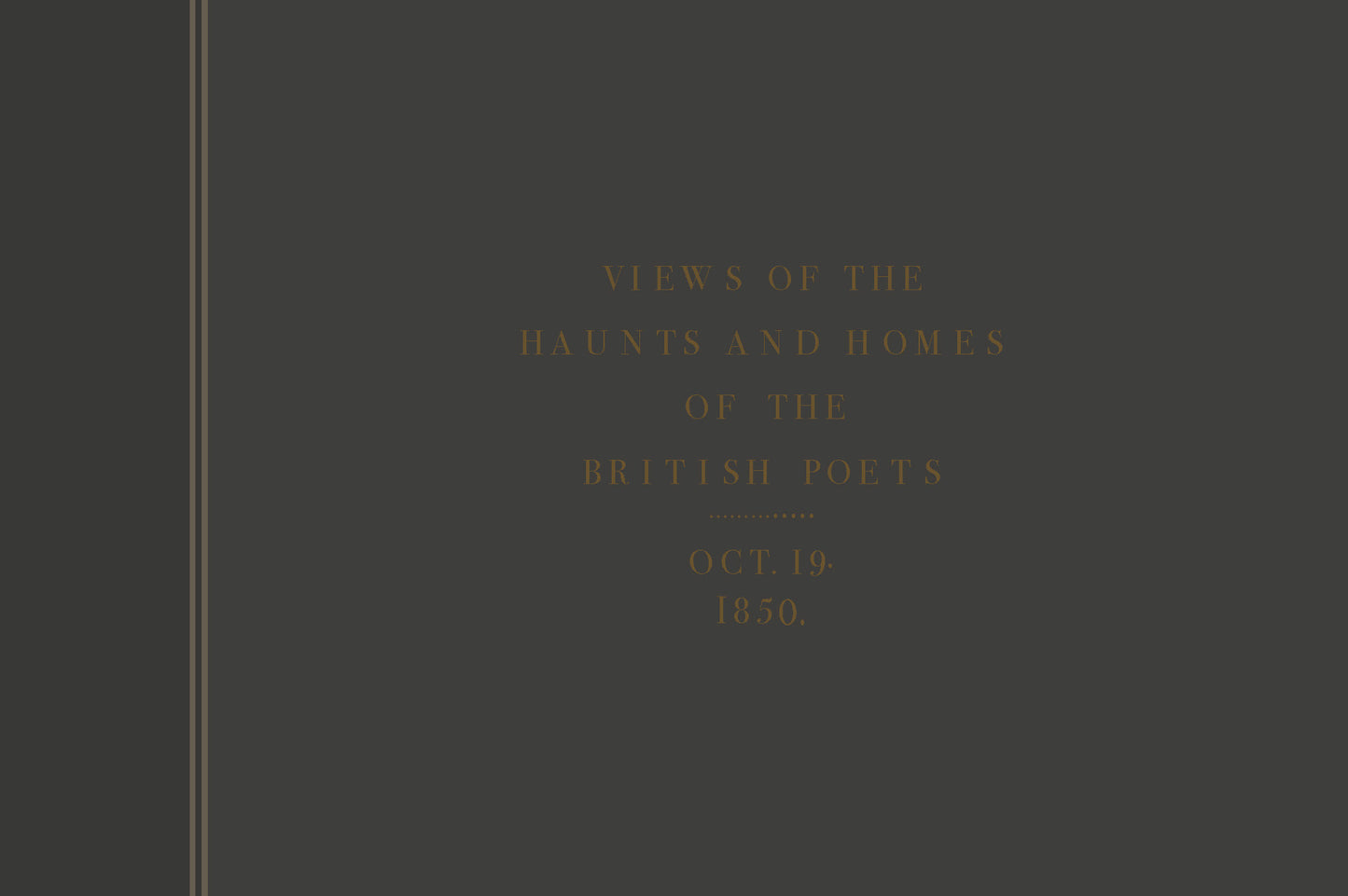Views of the Haunts and Homes of the British Poets
Views of the Haunts and Homes of the British Poets
Couldn't load pickup availability
View full details
Published in two volumes, in London by Richard Bentley, New Burlington Street, Publisher in Ordinary to Her Majesty and in New York by Harper & Brothers, William Howitt's Homes and Haunts of the Most Eminent British Poets is illustrated with engravings made by H. W. Hewet (engraver of numerous editions, publisher, and patentee of the Improved Screw-Wrench) in the New York edition. The London edition credits "The Illustrations by W. and G. Measom." George Samuel Measom, known for his illustrated railway guides, and his charity, collaborated with his brother, William, an engraver and a painter.The collected work Views of the Haunts and Homes of the British Poets, Oct. 19 1850, found by Christopher Ricks in the little bookshop in Nailsworth just a few miles from his home in Gloucestershire, contains the original mixed media/watercolour illustrations for the Howitt Haunts and Homes, presumably made by either one or both of the Measom brothers and bound for preservation in 1850, after the publication of the two Howitt volumes. From our Un-Gyve archives, the original sequence of thirty-nine illustrations, the home or haunt and the poet being identified by hand in blue ink on the tissue leaf that precedes each illustration. These lovely vignettes are bound, the pages with gilt edges, and the album secured with a brass clasp. This loving series of associations opens with Geoffrey Chaucer (Tabard Inn -- Southwark), and closes with Alfred Tennyson (Birthplace at Somersby).1850 was Tennyson's annus mirabilis, a year to marvel at: May had seen the publication of In Memoriam, and June his wedding. In November he was to succeed William Wordsworth (who had died in April) as Queen Victoria's Poet Laureate, bestowing and receiving many true tributes for the next forty-two years.This softcover release features the same printed plates included in the limited edition, available in tandem, in which Un-Gyve reproduced in faithful facsimile this tribute to the centuries' poets and to their spirits of place.
Measom, Sir George Samuel (1818-1901). Publisher and philanthropist, born in Blackheath, Kent, 3 December 1818, and baptized in St Alfege, Greenwich, 12 July 1819, one of five children of Daniel Measom (b. c.1790), carver and gilder, and Mary Ann, née Coventry. He was educated at a preparatory school in Blackheath. On 27 January 1842, when he married Sarah (1820-1865), daughter of John Hillman, fishmonger, Measom described himself as a tailor. Later in that decade he advertised his services as an engraver. About 1850 Measom took up railway topography. Measom was the author of the Official Railway Guides, the first of which had appeared in 1852 as The Illustrated Guide to the Great Western Railway. The guide to the Great Western was followed in 1853 by The Official Illustrated Guide to the South-Eastern Railway and all its Branches, and every succeeding volume was distinguished as 'official', with the company's arms on the cover and a list of the directors and officers as well as a description of its principal undertakings. The guides came to an end with the 1880s, though they were revised and reissued. Measom continued to publish engravings in his later years, but having achieved a comfortable ease and competence he devoted himself to philanthropic works. He became chairman and for some time treasurer of the Royal Society for the Prevention of Cruelty to Animals, and was a promoter of the charity later known as the Battersea Dogs' Home. He was also active in supporting the hospital, later the Royal Marsden, and argued strongly for the use of the title Cancer Hospital at a time, long enduring, when such bluntness was superstitiously shunned. Following the death of his first wife, in 1867 he married Charlotte (d. 1911), daughter of George Simpson. There were no children of either marriage. He was knighted in 1891 and became a justice of the peace for Middlesex. He continued to be active to the end of his life, and under recreations in Who's Who wrote `Never had time'. He died at home, St Margaret's Lodge, Isleworth, Middlesex, 1 March 1901.
William Frederick Measom, 1813-1887; or later (active 1840-1876), wood engraver printmaker; painter/draughtsman; brother of George Measom. Bibliography: R.K.Engen, 'Dictionary of Victorian Wood Engravers', 1985

